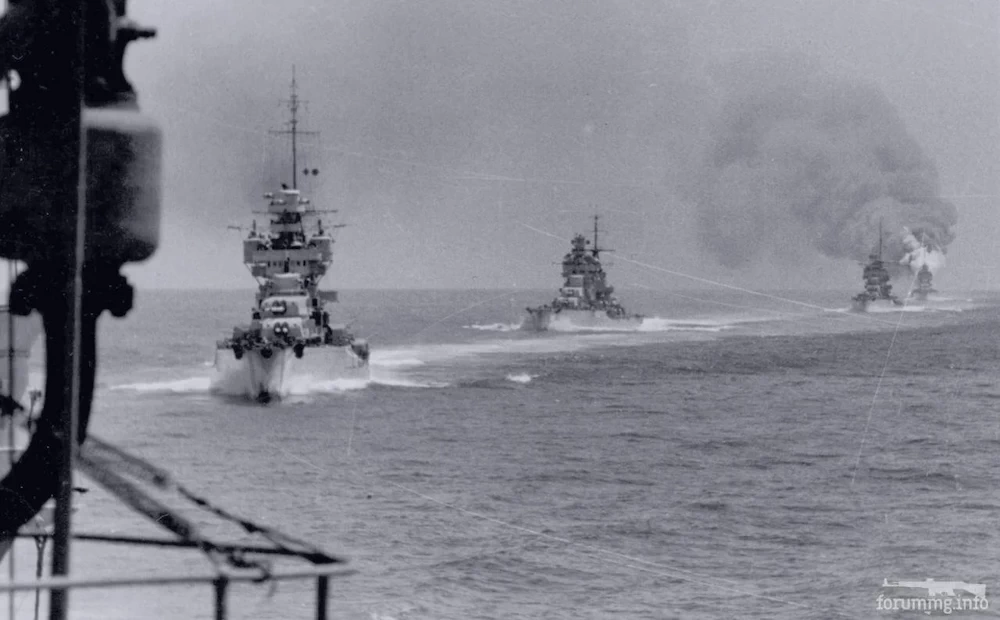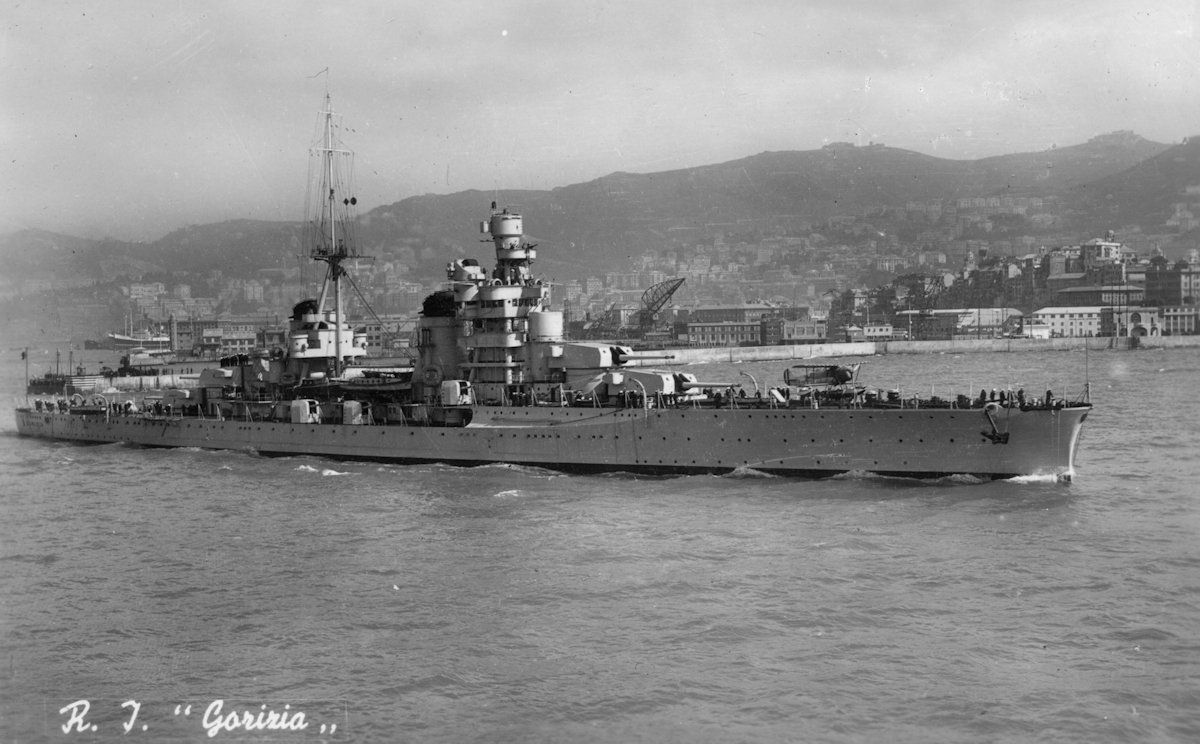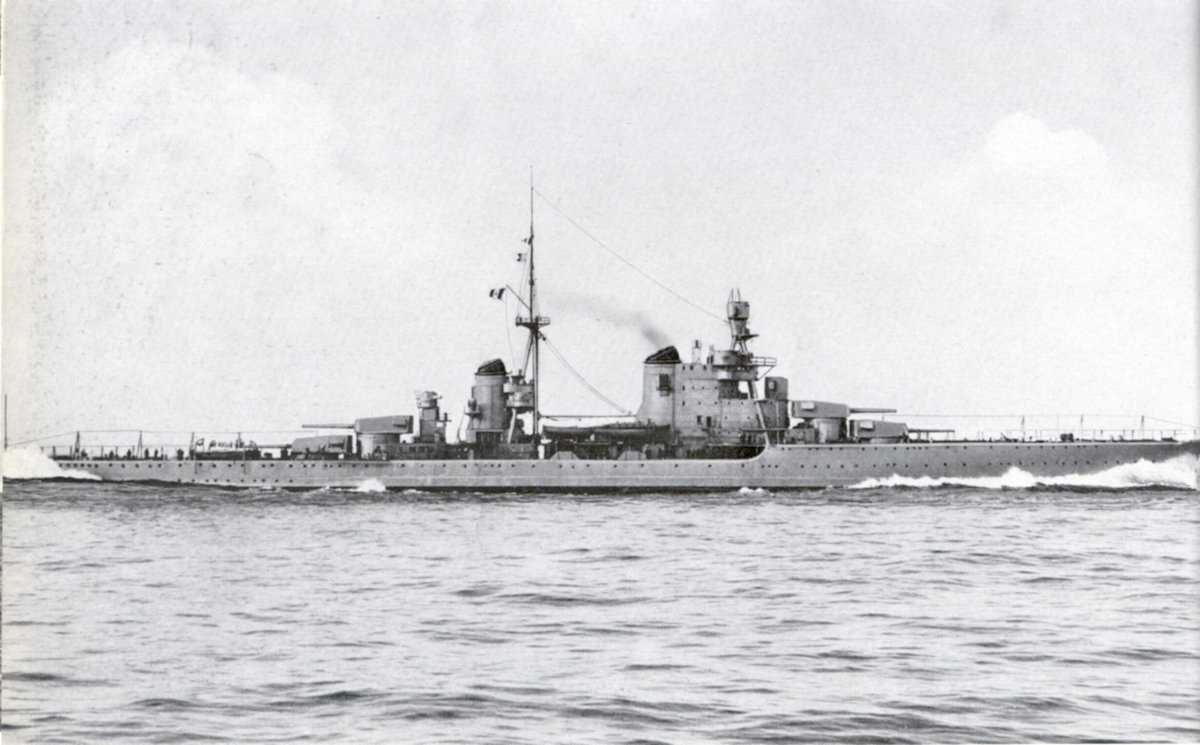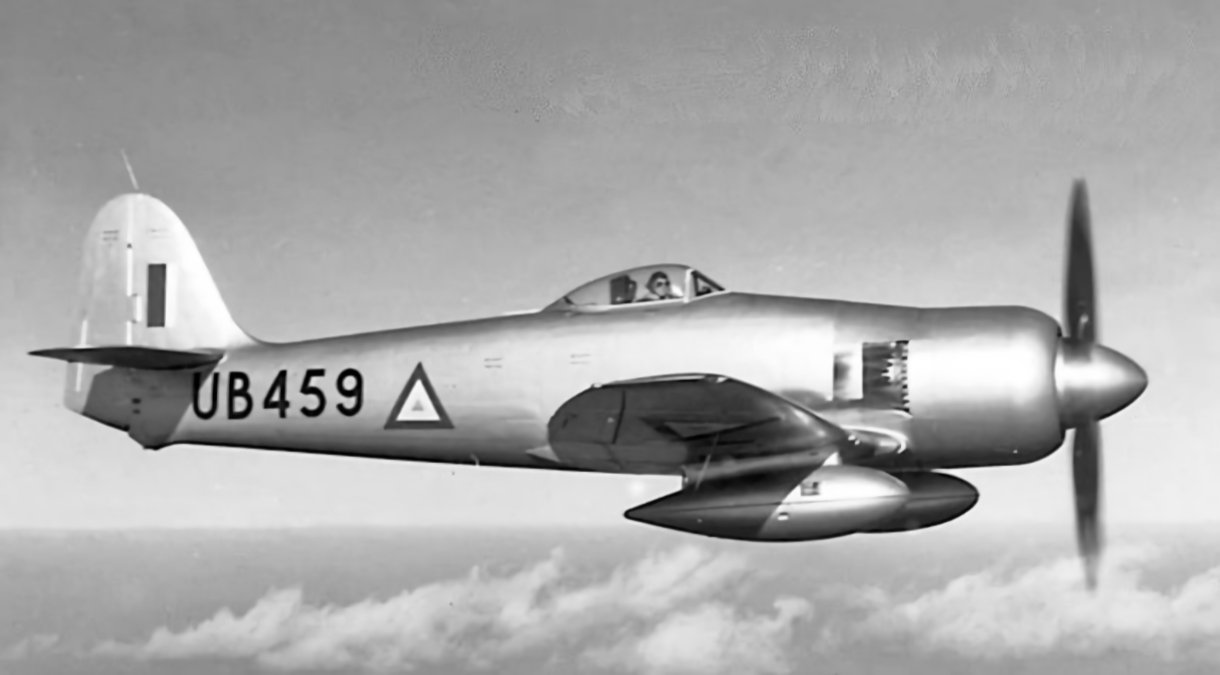Italian Heavy Cruiser Gorizia
Gorizia was the third member of the Zara-class heavy cruisers built for the Italian Regia Marina. Launched on 28 December 1930, she was commissioned on 31 December 1931. As with her sisters (Zara, Fiume and Pola) she was nominally within the 10,000 ton limit of the Washington Treaty, however she displaced significantly more than this.
On the 19th of August 1936 while steaming from Tangiers to Italy Gorizia suffered an explosion in her forward aviation fuel tank causing significant damage. She altered course for Gibraltar where temporary repairs were made before returning to Italy.
During World War Two, Gorizia took part in the Battles of Calabria on (9 July 1940), Cape Spartivento (27 November 1940). During the British attack on Taranto during the night of 11/12 November 1940, but was not targeted although her anti-aircraft guns shot down a British bomber. She was undergoing regular maintenance during the Battle of Cape Matapan where her three sisters were sunk.
An Allied air attack on the port of Messina on 21 November 1941 caused extensive damage to Gorizia’s superstructure from bomb splinters, though she nevertheless sortied that day to escort a convoy to North Africa. On 16 and 17 December, while on another convoy escort mission, she took part in the First Battle of Sirte against a force of British light cruisers and destroyers.
On 22 March 1942, she took part in the Second Battle of Sirte, where she was heavily engaged with British light cruisers and destroyers although she did not suffer any damage. While at the port of La Maddalena on 10 April 1943, Gorizia was attacked by US and hit three times causing serious damage. Gorizia entered dry dock on 4 May 1943 for repairs and was still there when Italy surrender in September. Although seized by Germany, no further use was made of her due to her condition. She was floated out of the dry dock and anchored in the harbour. On the night of 21–22 June 1944, British and Italian frogmen used Chariot manned torpedoes to infiltrate the harbor to sink Gorizia and Bolzano to prevent the Germans from using them as blockships; while the commandos did sink Bolzano, they were unsuccessful with Gorizia. She remained afloat and heavily listing in April 1945, when Allied forces liberated La Spezia. Judged to be too badly damaged to repair, the postwar navy decided to discard the ship. She was accordingly stricken from the naval register on 27 February 1947 and broken up for scrap














































